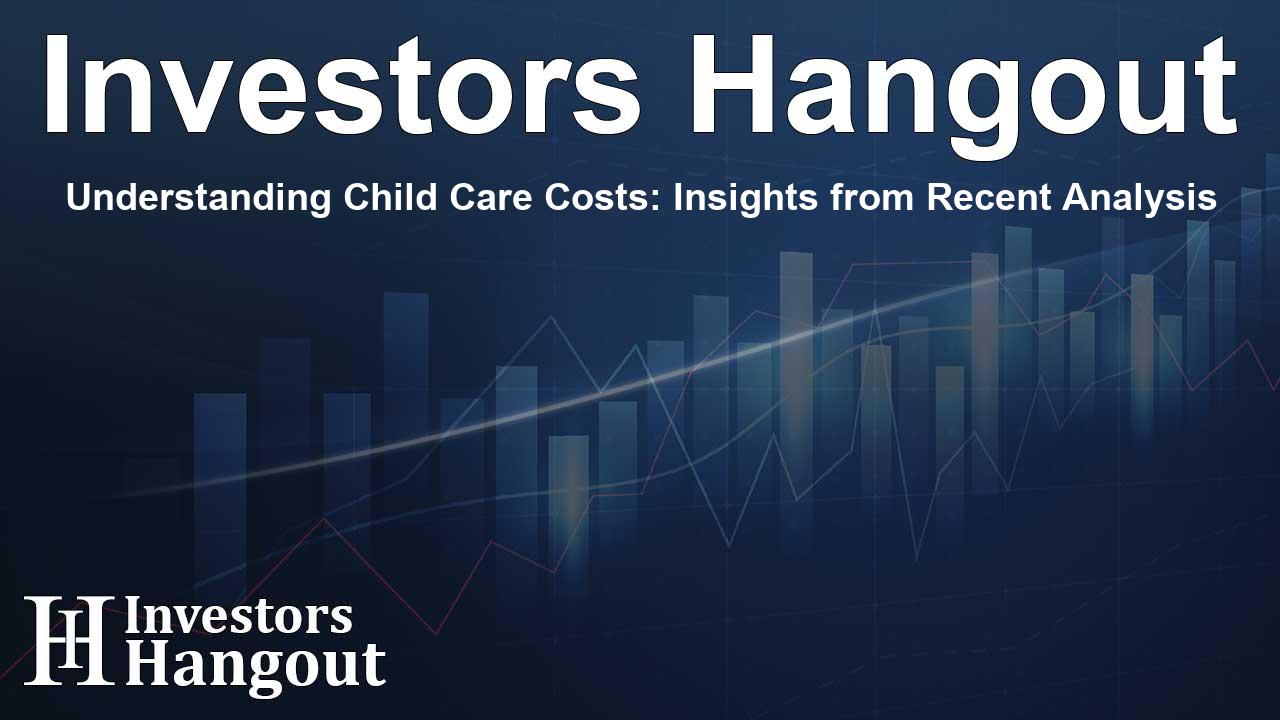Understanding Child Care Costs: Insights from Recent Analysis

Analyzing Child Care Costs Across the Nation
The Federal Reserve Bank of St. Louis has conducted a detailed analysis revealing significant insights into the costs associated with child care across the United States. The findings show that child care is not only expensive but that compensation for workers in this sector remains below the median wage in all states.
The Importance of Child Care for Economic Stability
Child care plays a crucial role in supporting parents who wish to join or remain in the workforce. Senior researcher Ana Hernández Kent highlighted the critical relationship between child care availability and the economic well-being of families. She noted, "The shortage of high-quality child care significantly impacts the economy, particularly as many workers are also parents."
The Workforce Impacts of Child Care Shortages
Economic researcher Charles S. Gascon emphasized, "A reliable child care infrastructure is essential for maintaining a robust workforce. Our findings indicate that inadequate child care options can prevent potential workers, especially mothers, from entering the job market." This lack of availability creates challenges for parents seeking employment and can have broader implications for workforce participation rates.
Key Findings from the Study
The analysis included several noteworthy observations:
- More than 16% of mothers with children under six years old reported that they were not seeking employment due to difficulty in securing child care.
- On average, center-based child care costs around $9,200 per child annually, which represents approximately 10% of the median income for U.S. households with young children. This amount exceeds the 7% threshold deemed affordable by the Department of Health and Human Services.
- Affordability becomes even more strained for low-wage families. In certain cases, families in Florida might have to allocate between 16% to 77% of their income on child care based on family size and the ages of their children.
- The national average wage for child-care providers sits at $14.60 per hour, significantly lower than the typical worker’s median wage of $23.11.
- Increasing wages for child care workers could lead to a rise in tuition fees for parents, presenting a complex situation of balancing fair wages and affordability.
The Economic Ripple Effects of Child Care
The study highlights how the high costs and limited access to affordable child care can create extensive ripple effects throughout the national economy. Gascon noted, "The challenges of costly, hard-to-access child care could restrict many mothers' ability to work, as they typically bear the brunt of child-rearing responsibilities."
Quality and Affordability in Child Care
Beyond just financial implications, there is a pressing need to consider the quality of available child care options. Kent pointed out that high-quality early childhood education has the potential to combat poverty and yield significant returns on investment for families and society.
Accessing More Information
For those interested in exploring further, Gascon and Kent’s comprehensive analysis is accessible on the St. Louis Fed’s blog. Additional fact sheets are available for each state, providing targeted insights into regional child care costs and challenges.
Frequently Asked Questions
What were the main findings of the Federal Reserve Bank of St. Louis analysis?
The analysis found that child care is expensive across states, with significant worker compensation issues, affecting parents' ability to access jobs.
How does child care impact mothers in the workforce?
Many mothers report not seeking employment due to difficulties in arranging child care, which can keep them out of the labor force.
What is considered affordable child care?
The Department of Health and Human Services considers child care affordable when it costs no more than 7% of a household's income.
What is the average cost of child care per child in the U.S.?
On average, center-based child care costs about $9,200 per child annually.
How much do child-care workers earn nationally?
The average wage for child-care providers is $14.60 per hour, which is below the median wage for typical workers in the U.S.
About The Author
Contact Thomas Cooper privately here. Or send an email with ATTN: Thomas Cooper as the subject to contact@investorshangout.com.
About Investors Hangout
Investors Hangout is a leading online stock forum for financial discussion and learning, offering a wide range of free tools and resources. It draws in traders of all levels, who exchange market knowledge, investigate trading tactics, and keep an eye on industry developments in real time. Featuring financial articles, stock message boards, quotes, charts, company profiles, and live news updates. Through cooperative learning and a wealth of informational resources, it helps users from novices creating their first portfolios to experts honing their techniques. Join Investors Hangout today: https://investorshangout.com/
The content of this article is based on factual, publicly available information and does not represent legal, financial, or investment advice. Investors Hangout does not offer financial advice, and the author is not a licensed financial advisor. Consult a qualified advisor before making any financial or investment decisions based on this article. This article should not be considered advice to purchase, sell, or hold any securities or other investments. If any of the material provided here is inaccurate, please contact us for corrections.
